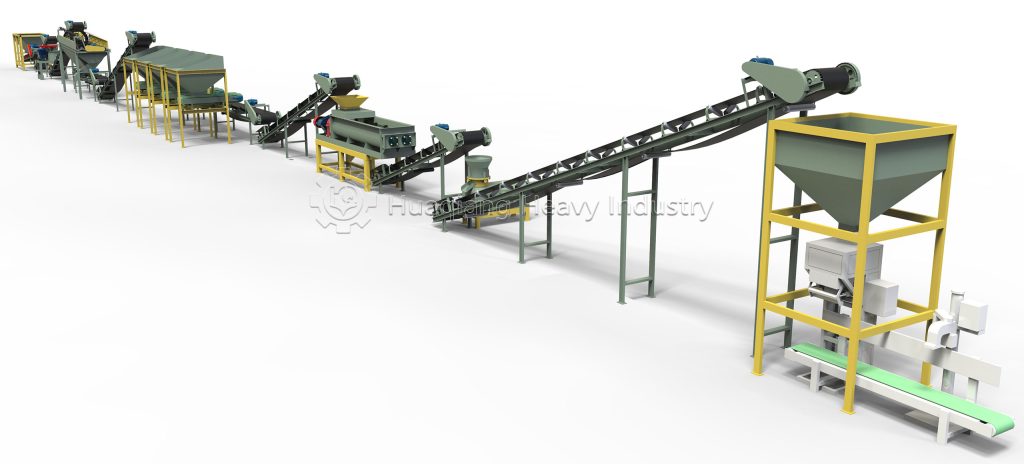Raw Material Composition of Biofertilizers
Biofertilizers, also known as microbial fertilizers, consist of three core components: functional microbial strains, organic carriers, and auxiliary ingredients. This unique combination ensures that the fertilizers not only provide nutrients to plants but also improve soil environment and promote crop growth through microbial activities.
Functional Microbial Strains
As the “active heart” of biofertilizers, functional microbial strains determine the specific efficacy of the fertilizer. Common strains include nitrogen-fixing microorganisms like Azotobacter chroococcum, which convert atmospheric nitrogen into plant-absorbable forms; phosphorus and potassium solubilizing microorganisms like Bacillus subtilis, which release fixed nutrients in soil; as well as growth-promoting and disease-resistant microorganisms that enhance plant health by secreting growth hormones or suppressing pathogens.
Organic Carriers
Organic carriers account for 80%-95% of biofertilizers, providing the substrate for microbial survival and reproduction. Ideal carriers need to be loose and breathable, with good water and fertilizer retention properties, while being rich in organic matter. Commonly used carriers include agricultural waste such as decomposed straw and livestock manure, industrial by-products like humic acid and lignite, as well as other materials such as peat soil and plant ash.

Industrial Production Process
The industrial production of biofertilizers is a precise and complex process, with the core objective of ensuring functional strains stably survive and maintain activity within the carriers.
Pretreatment Stage
Production begins with raw material pretreatment. Organic carriers require crushing, decomposition, or sterilization treatment to eliminate harmful microorganisms and create a suitable living environment for functional strains. Meanwhile, functional strains undergo large-scale cultivation through a three-stage amplification process, gradually scaling up from laboratory flask culture to industrial-scale fermenter production.
Mixing and Forming
The amplified bacterial solution is uniformly combined with pretreated carriers in mixing equipment. This step requires precise control of bacterial solution ratio and mixing time to ensure each carrier particle fully adsorbs functional strains. Subsequently, the mixture forms 2-4 millimeter granules through granulation equipment and undergoes drying under strict low-temperature conditions to protect strain activity.
Quality Control and Packaging
Dried granules require strict quality testing, including indicators such as effective viable bacteria count, contamination rate, and heavy metal content. Qualified products are packaged using special breathable packaging materials and stored in cool, ventilated environments to maximize product shelf life.
Key Production Control Points
The success of biofertilizer production depends on the control of multiple key factors. Temperature management is particularly important, as the temperature must not exceed 45°C throughout the production process to avoid damaging strain activity. Moisture control is equally crucial, with carrier moisture needing to be maintained within the suitable range of 40%-50%. Additionally, production environment cleanliness and raw material quality directly affect the final product’s effectiveness.
Biofertilizers represent an important trend in modern agriculture’s move toward greater sustainability. By converting agricultural waste into valuable resources while reducing dependence on chemical fertilizers, biofertilizers not only improve agricultural production efficiency but also make positive contributions to environmental protection.
Integrating Biofertilizer Production into Modern Organic Fertilizer Manufacturing
The sophisticated production process for biofertilizers represents a specialized segment within the broader organic fertilizer manufacturing industry. While traditional organic fertilizer production line systems focus primarily on nutrient content and physical properties, bio organic fertilizer production line configurations must additionally preserve microbial viability throughout processing. This requires specialized equipment and careful process control, particularly during the crucial organic fertilizer fermentation stage where temperature management is essential for maintaining strain activity.
Granulation technology plays a particularly important role in biofertilizer production, with equipment selection directly impacting microbial survival rates. The standard organic fertilizer granulator must be adapted for low-temperature operation, while innovative solutions like the new type organic fertilizer granulator and new type two in one organic fertilizer granulator offer integrated approaches that minimize thermal stress on microorganisms. These specialized fertilizer granulator systems represent significant advancements in biofertilizer production technology, enabling the creation of stable, granular products that maintain high microbial counts.
The successful integration of microbial strains with organic carriers demonstrates how organic fertilizer manufacturing has evolved to incorporate biological components. From careful strain selection to precision granulation, each step in the bio organic fertilizer production line must balance traditional fertilizer manufacturing principles with the unique requirements of living microorganisms. This sophisticated approach to fertilizer production supports sustainable agriculture by creating products that improve soil health through both nutritional and biological mechanisms.